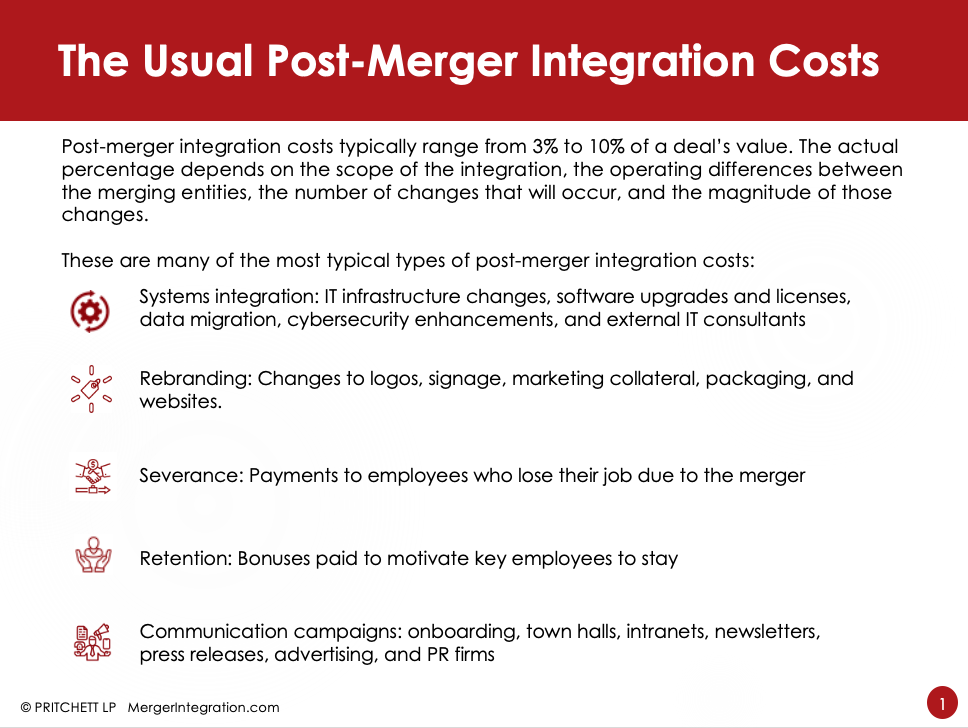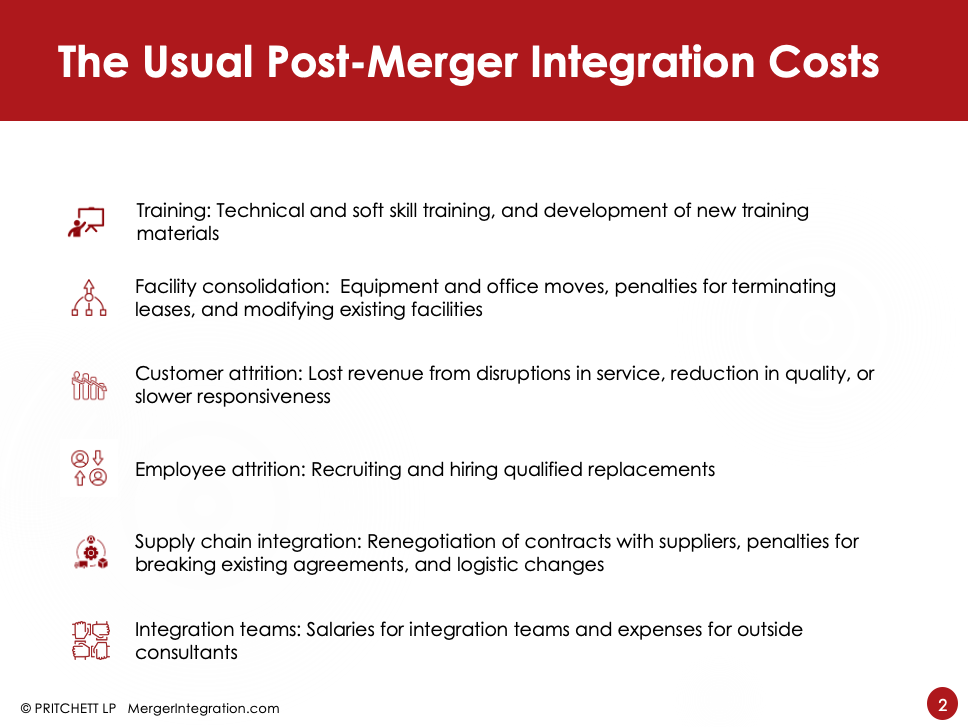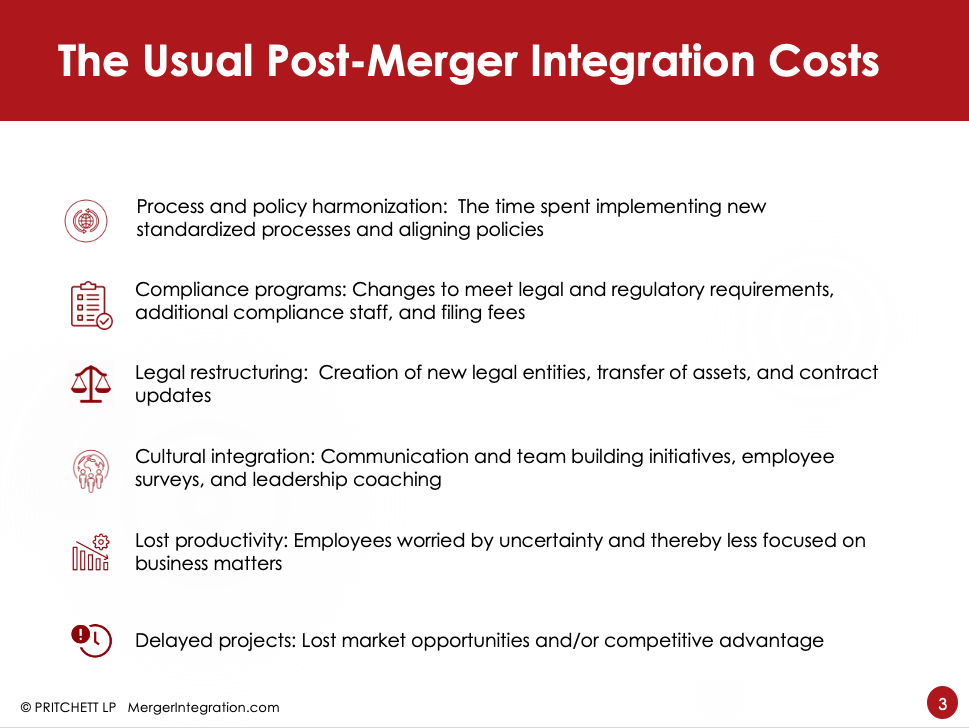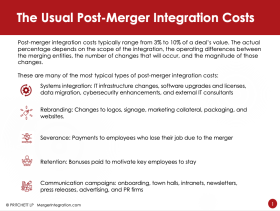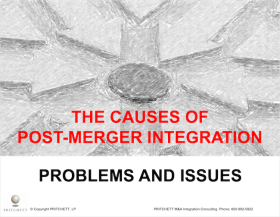Post-merger integration costs typically range from 3% to 10% of a deal’s value. The actual percentage depends on the scope of the integration, the operating differences between the merging entities, the number of changes that will occur, and the magnitude of those changes.
These are many of the most typical types of post-merger integration costs:
Systems integration: IT infrastructure changes, software upgrades and licenses, data migration, cybersecurity enhancements, and external IT consultants
Rebranding: Changes to logos, signage, marketing collateral, packaging, and websites
Severance: Payments to employees who lose their job due to the merger
Retention: Bonuses paid to motivate key employees to stay
Communication campaigns: onboarding, town halls, intranets, newsletters, press releases, advertising, and PR firms
Training: Technical and soft skill training, and development of new training materials
Facility consolidation: Equipment and office moves, penalties for terminating leases, and modifying existing facilities
Customer attrition: Lost revenue from disruptions in service, reduction in quality, or slower responsiveness
Employee attrition: Recruiting and hiring qualified replacements
Supply chain integration: Renegotiation of contracts with suppliers, penalties for breaking existing agreements, and logistic changes
Integration teams: Salaries for integration teams and expenses for outside consultants
Process and policy harmonization: The time spent implementing new standardized processes and aligning policies
Compliance programs: Changes to meet legal and regulatory requirements, additional compliance staff, and filing fees
Legal restructuring: Creation of new legal entities, transfer of assets, and contract updates
Cultural integration: Communication and team building initiatives, employee surveys, and leadership coaching
Lost productivity: Employees worried by uncertainty and thereby less focused on business matters
Delayed projects: Lost market opportunities and/or competitive advantage

